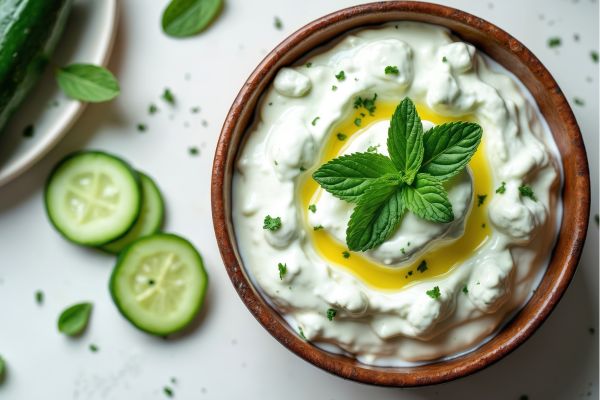
From the Desk of Carolyn Dean MD ND
What’s on the Outside
The global salon market now exceeds $247 billion – $60 billion in the US alone. This industry is focused on grooming your hair, skin and nails with the seemingly harmless message that you’re “taking care of yourself” through expensive pampering. You’re encouraged to top up your salon experience with the purchase of expensive polishes and emollients, but nobody is encouraging you (because they don’t know how) to actually take care of your hair, skin and nails in a healthier way
Take a moment to think about what you spend each month or year on these products and services. Then consider investing some of that in your overall health – with beneficial minerals and supplements that nourish your hair, skin and nails from the inside out.
What Dr. Google or an MD might say about hair, skin and nails:
As expected, Dr. Google suggests avoiding stress, using sunscreen, not smoking, and eating a healthy diet for the health of your skin. The same advice applies to your hair and nails. Many drugs on offer claim to encourage hair growth although most are not approved for that purpose. And most don’t work – I know, I’ve tried them.
When it comes to your skin, various surgeries and injections promise to make it appear healthier. For hair procedures like micro-needling, lasers, and even transplants are suggested. And nails? We’re told to polish, gel, shellac, or cover them with acrylics — not to actually nourish them.
You just need a whiff of a nail salons to know they rely on harsh chemicals – formaldehyde, toluene, and dibutyl phthalate (DBP) are in the nail polish and hardeners. Acetone, methacrylates, and various solvents and acrylates can irritate your skin and lungs and may lead to health problems like asthma, neurological issues, and potential reproductive harm. How often do you have your nails done?
This review of mainstream advice shows that almost everything offered is purely cosmetic. Nobody is talking about the true health of your hair, skin, and nails.
I, on the other hand, have a great deal to say.
What I say about hair, skin and nails:
In my book Total Body Reset for Women, I have a chapter dedicated to your hair, skin, and nails. I want to share a few findings and insights that you will not find anywhere else.
Hair – it’s folly to ignore your follicles
The hair follicle, the only living part of the hair, sits the root of the hair shaft like a tiny bulb. It has its own stem cells which enable regrowth after shedding, and sebaceous glands that produce the oil that lubricates the hair.
Follicles also have nerve cells that release histamine and serotonin when touched, and muscles that are connected to the autonomic nervous system.
Because the follicle is alive – with its own nerve and muscle cells – it requires the same care and feeding as all the cells and tissues in the body. And if you’re deficient in key minerals, vitamins, and essential fatty acids, that means your follicles will be affected because they are undernourished.
What does that look like?
A magnesium deficiency can constrict the tiny muscles around your hair follicles, restricting circulation to the scalp and limiting nutrient absorption. That relaxing head massage won’t do much if you’re magnesium deficient.
Stress also contributes to hair loss, in part because it depletes the very nutrients your follicles rely on. To truly support hair growth, ensure you’re well-supplemented — starting with magnesium at the top of your list for follicle health. Picometer silver can also support stem cell activity around the follicles.
What you can do for your hair
For optimal hair health, I recommend a combination of picometer magnesium, silver, zinc, and copper — taken orally and also sprayed directly onto the scalp. These minerals can be left on without rinsing and applied daily or several times a day.
Many customers have reported that after using our formulas, their gray hair began returning to its original color, though results vary. Research shows that deficiencies in B12, folic acid, and biotin can contribute to graying.
Your nails
Many women unintentionally damage their nails with harsh salon chemicals. The nails underneath can become brittle, and trapped moisture under coatings can lead to bacterial or fungal infections.
Nails are made of the protein alpha-keratin and like any tissue in the body, they rely on the proper nutrients. Here is an excerpt from my book, Total Body Reset for Women, to help you identify what your nails might be trying to tell you.
Here are the various nutrient deficiencies that cause nail abnormalities.
- Brittle nails can be due to iron deficiency and decreased circulation.
- Spoon-shaped, concave nails also indicate an iron deficiency.
- Brittle, ridged, and thin nails suggest Raynaud’s syndrome, in which there is decreased circulation during cold weather or during periods of stress that affects nail growth. Picometer magnesium can be helpful to increase circulation.
- Brittle nails can also be caused by overuse of solvents and detergents.
- White spots on the nails indicate zinc deficiency or, more rarely, a loss of protein in the urine.
- Yellowish nails reveal lymphatic congestion, respiratory congestion, or deficiency of vitamin E.
- Yellow toenails and red patches and bruising around the nails imply diabetes.
- Dark nails can indicate a B12 deficiency.
- A white cuticle with a dark tip is an indication of chronic kidney disease.
- Whitish nails signify liver or kidney disease or anemia.
- Horizontal ridges on the nails indicate protein or zinc deficiency.
- Vertical lines on the nails are the result of iron, calcium or magnesium deficiency.
Give your nails a break between spa visits and notice what they reveal. Your nails are excellent health indicators — take the time to listen to them. If you see signs of deficiency, our Customer Experience Team can help you build a corrective protocol.
The skin you’re in
The skin is our largest organ. In fact, the average adult’s skin measures about 22 square feet (roughly the size of a doorway). Our skin protects our insides from the outside environment and so it’s important that we understand how to protect it. Any chemicals you put on our skin have to be processed by our immune system, like that chemical peel you get to give you smoother skin.
This organ has the job of detoxifying our whole system through sweating out chemicals and toxins. Epsom salts baths or swimming in the ocean are great ways to support this natural process.
Drinking pure water is great nourishment for your skin. Ideally, you’ll drink ½ your body weight in ounces. If you weigh 150 lbs., you will drink 75 ounces. Add ¼ tsp of sea salt or Himalayan salt to every quart of drinking water. Of course you’ll add your picometer, stabilized ion form of magnesium to your drinking water to further nourish your skin cells.
For your skin (nails and hair too)
As you’ve already seen, magnesium plays a crucial role in cellular hydration and balance throughout the body. Here’s an excerpt from Total Body Reset for Women, on nourishing your outside skin properly.
In addition to lots of good water enriched with sea salt, the skin also requires good nutrition; exercise to move your lymphatic system; and plenty of clean air.
I also emphasize the importance of internal nutrients. Dietary supplements play a major role in skin health. Making sure you get enough minerals and vitamins in your diet will help your skin, hair, and nails remain healthy and youthful. Vitamins and minerals improve the structure, function, and appearance of your skin, hair, and nails.
Magnesium
Magnesium is the most effective nutrient for balancing cellular hydration throughout the body. Magnesium is the master mineral. As an electrolyte, it directs water into the cells, where it should be. Otherwise, you end up with fluid retention and edema – mostly in the ankles and lower legs and dehydration everywhere else. Magnesium is a super hydrator and ensures your body is making the best use of the water you’re giving it.
It’s also responsible for 80% of known metabolic functions, which includes keeping your skin, hair, and nails healthy.
Zinc
Zinc is an essential mineral that helps the body inside and out. It’s extremely important for the immune system, helping to rid the body of viruses. Due to its anti-inflammatory effects and wound healing, zinc is especially beneficial for inflammatory acne and related scarring, eczema, and dermatitis.
Vitamin D
Vitamin D is a potent antiviral agent and boosts the immune system. Vitamin D can normalize cell turnover and prevent the buildup of dead cells on the skin’s surface that promotes psoriasis. Vitamin D also functions as a steroid, working within the cell’s nucleus to promote the proper structure and function of genes. The Skin Cancer Foundation recommends vitamin D supplementation as a way to prevent skin cancer. Remember that vitamin D requires magnesium for its activation.
Omega-3, Vitamin A, Vitamin E
Omega-3, with it’s essential fatty acids DHA, EPA, along with vitamin A and vitamin E are important fat-soluble nutrients for skin health.
DHA is a structural component of the skin. It is responsible for the health of cell membranes, which make up a large part of your skin. A healthy cell membrane results in soft, moist, supple, and wrinkle-free skin.
EPA benefits your skin in the following ways:
- Managing oil production and hydration of your skin
- Preventing hyperkeratinization of hair follicles, which appears as the little red bumps often seen on upper arms, although mine disappeared once I started applying my magnesium lotion
- Reducing premature aging of your skin
- Reducing the risk of acne
- Omega-3s, protecting your skin from sun damage
- EPA, helping to block the release of substances that eat away at the collagen in your skin after sun exposure
Vitamin C
Most skin care experts recognize the role of vitamin C in skin health that includes tissue repair, accelerated wound healing, eliminating bruising, increasing type I collagen synthesis, and improving the elasticity of the skin. It also helps to reduce levels of lead, mercury, and other heavy metals. I say that the thinning skin and bruising on the arms of the elderly is an obvious sign of scurvy and a severe form of vitamin C deficiency.
Vitamin B Complex
Vitamin B Complex has shown great promise in the role of skin health. A 2018 study found that vitamin B could help the body produce healthy new skin cells. In a separate study, vitamin B-3, or niacinamide, showed signs of reduced skin aging. It may also help reduce the appearance of age spots and other forms of skin discoloration. Vitamin B-5 (pantothenic acid) has been studied in the treatment of acne and to reduce skin aging. A randomized controlled trial from 2014 found that people who took a B-5 dietary supplement for 12 weeks saw significant reduction in acne and skin inflammation.
DON’T FEED YOUR SKIN SUGAR
Let’s not forget one of the biggest threats to skin health: sugar. It feeds yeast and causes a myriad of health conditions due to yeast toxins being eliminated through the skin. Sugar is not your skin’s best friend. Yeast produces 78 separate toxins that can create skin eruptions such as psoriasis, eczema, acne, and all manner of skin rashes and inflammatory skin conditions. Eliminating processed sugars is essential to having healthy skin.
A healthy reflection
Healthy skin, hair, and nails aren’t created in a salon — they’re the reflection of a body nourished from within. The best way to proceed is to call our wonderful Customer Experience Team to help build a personalized protocol that you can depend on.
Carolyn Dean MD ND
The Doctor of the Future



